Cheongganjeong Pavilion (청간정)
17.3Km 2024-03-18
5110 Donghae-daero, Toseong-myeon, Goseong-gun, Gangwon-do
Cheongganjeong Pavilion, located atop a cliff, was built during the mid-Joseon period. It is situated at the point where Cheonggancheon Stream, originating from Seoraksan and Cheonhusan Mountains, flows into the East Sea. The view of the pine forest and the East Sea draws many visitors. Nearby attractions include Cheongganhaebyeon Beach, Cheonjinhaebyeon Beach, Ayajinhaebyeon Beach, as well as Bongpo Port and Ayajin Port.
Ulsanbawi Rock Milky Way Photo Spot on Old Misiryeong Trail (미시령옛길 울산바위 은하수)
17.5Km 2024-03-18
5110 Donghae-daero, Toseong-myeon, Goseong-gun, Gangwon-do
Misiryeong Pass, historically a pathway connecting Inje to Sokcho, also serves as an observation point for viewing Ulsanbawi Rock in Seoraksan Mountain. More recently, it has gained popularity as a photo spot for capturing the Milky Way. As a result, on clear nights, the parking lot is often filled with eager photographers.
Seoraksan Osaek Jujeongol Valley (설악산 오색주전골)
17.6Km 2024-02-29
Yaksu-gil, Seo-myeon, Yangyang-gun, Gangwon-do
+82-33-672-2883
Osaek Jujeongol Valley in Seoraksan Mountain is renowned for its vibrant autumn maple leaves. The area features a 7-kilometer trail stretching from Oksaek Mineral Spring to Yongsopokpo Falls, accessible to all visitors. The valley boasts stunning scenery, with a mix of valleys and rock formations. When the autumn leaves begin to change colors, the landscape turns into a breathtaking masterpiece.
Seorak Special Tourist Zone (설악 관광특구)
18.4Km 2020-03-25
Sokcho-si, Gangwon-do
+82-33-249-2775
Seorak Special Tourist Zone is a vast zone included in 3 administrative districts, encompassing the entirety of Seoraksan Mountain. In this zone, visitors have various ways to enjoy Seoraksan Mountain and the natural environment of the East Sea region.
Sokcho, which occupies the largest area in the zone, comes first when talking about Seoraksan National Park. Tourists can appreciate the picturesque scenery of the sea and coastal lakes as well as the mountain scenery of Seoraksan Mountain. Hikers can climb the mountain or ride a cable car. Sokcho Beach is a hot spot that attracts young people who fill the place with energy and life all through the summer.
Abai Village, which appeared in several TV dramas for its unique atmosphere, and Sokcho Jungang Market offer local specialties, such as abai sundae (Korean sausage) and dak gangjeong (glazed fried chicken bites).
Goseong, which is bordered by Seoraksan Mountain and Geumgangsan Mountain, is part of the Northern Limit Line (NLL) that offers a unpolluted, beautiful landscape around the Demilitarized Zone (DMZ). Hwajinpo Beach near Hwajinpo Lake, which is a lagoon, and Songjiho Beach near Songjiho Lake are the best places to spend a peaceful vacation. At Hwajinpo Lake, tourists can visit the summer house used by the first South Korean President Syngman Rhee and Castle of Hwajinpo, visited by the former North Korean leader Kim Il-sung before the division of the Korean Peninsula. Lastly, although it is a relatively small part of Seorak Special Tourist Zone, Yangyang has resources for mountain tourism and maritime culture, such as Seoraksan National Park and Naksan Provincial Park. Naksan Beach, Naksansa Temple and Hajodae are popular tourist sites. It is also famous as a district producing high quality pine mushroom.
* Current State of Seorak Special Tourist Zone
1) Districts Covered: Areas around Sokcho-si and parts of Goseong and Yangyang-gun, Gangwon-do
2) Area: 138.2k㎡(Sokcho 104.9k㎡, Goseong 30.5k㎡, Yangyang 2.8k㎡)
* Tourist Attractions
Seoraksan National Park, Sokcho Beach, Naksan Provincial Park, Hwajinpo Lake, Songjiho Lake, Hajodae Pavilion, Naksansa Temple, Osaek Mineral Spring, etc.
Goseong Hwaamsa Temple (화암사(고성))
18.5Km 2025-09-10
100 Hwaamsa-gil, Toseong-myeon, Goseong-gun, Gangwon-do
Hwaamsa Temple was built during the Silla period, and then repaired many times throughout history, with the temple even moving locations to where it is now in 1864. The current structures were built in 1991 for the World Jamboree. The temple name also changed throughout history, with the current name being given in 1912. The temple is located in a pristine natural environment, and is home to a traditional tea house, making it a great place to relax and feel at peace.
Seoraksan Heullimgol Valley (설악산 흘림골)
19.0Km 2024-02-16
San1-71, Osaek-ri, Seo-myeon, Yangyang-gun, Gangwon-do
Yangyang’s Heullimgol Valley, named for its cloud-like, foggy appearance due to the surrounding high mountains and deep valleys, offers a spectacular view and serves as the gateway to Deungseondae. This spot provides an expansive view of the southern side of Seoraksan Mountain. Notable sites near Heullimgol Valley include Yeosimpokpo Falls, Deungseondae, Deungseonpokpo Falls, Geumgangmun Gate, and Jujeongol Valley. Access to Heullimgol Valley is strictly limited to 5,000 visitors per day, with entry based on time reservations. Therefore, visitors must make a reservation through the Korea National Park Service's reservation system before visiting.
Farmer's Kitchen (파머스키친)
19.4Km 2024-11-06
44-39 Dongsankeun-gil Hyeonnam-myeon, Yangyang-gun, Gangwon-do
This is a handmade burger restaurant located right in front of Yangyang Dongsan Port, where fishing boats float. The American-style interior exudes a casual look. From the rooftop on the 3rd floor, the view towards the sea is wide enough that you can see the sea and islands beyond the port. Combining fresh vegetables and rich gravy, the burger tastes just as good as the view.
Micheongolgyegok Valley (미천골계곡)
19.8Km 2019-11-09
Guryongnyeong-ro, Seo-myeon, Yangyang-gun, Gangwon-do
+82-33-670-2397
Micheongolgyegok Valley starts from the Yangyang area and ends right before Guryongnyeong Pass. With not many visitors here, the valley is left in a pristine condition. The area is famous for its rich forest, clean water, uniquely shaped rocks, wild flora and fauna, underground mineral water, cultural heritages of the ancient SIlla kingdom, locally produced honey and other forest products. The Micheongolgyegok Valley Recreational Forest is 5,652,000㎡ in size filled with broadleaf trees. At the entrance of the valley is Seollimwon Temple Site, which was originally established under the reign of King Beopheung of Silla and then closed at the end of the Goryeo dynasty. Other relics include a stone lamp, 3-story stone pagoda, Honggakseonsa Monk Pagoda, and a stupa.

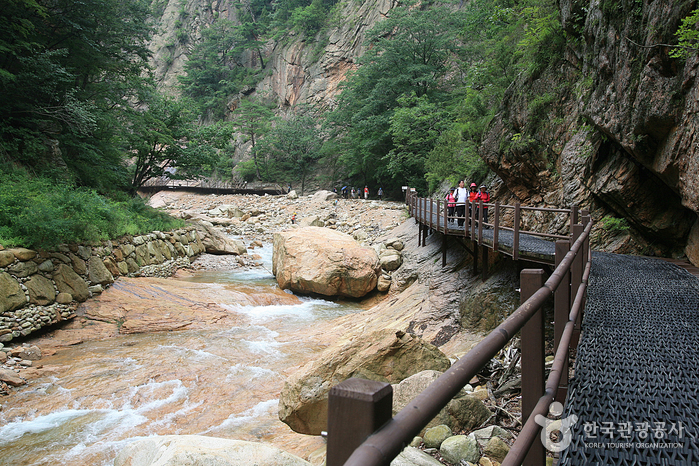
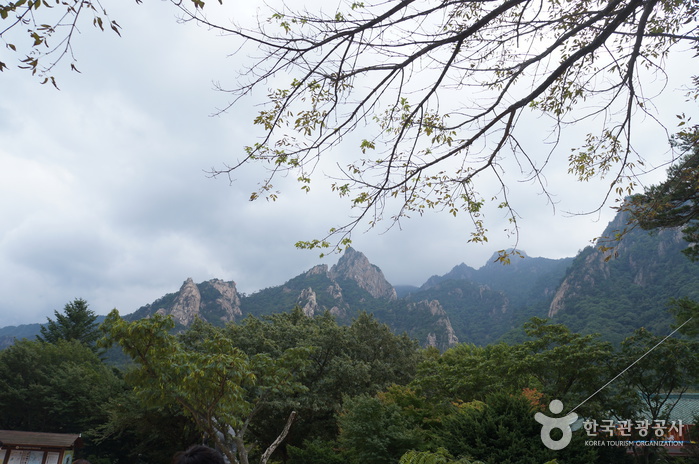
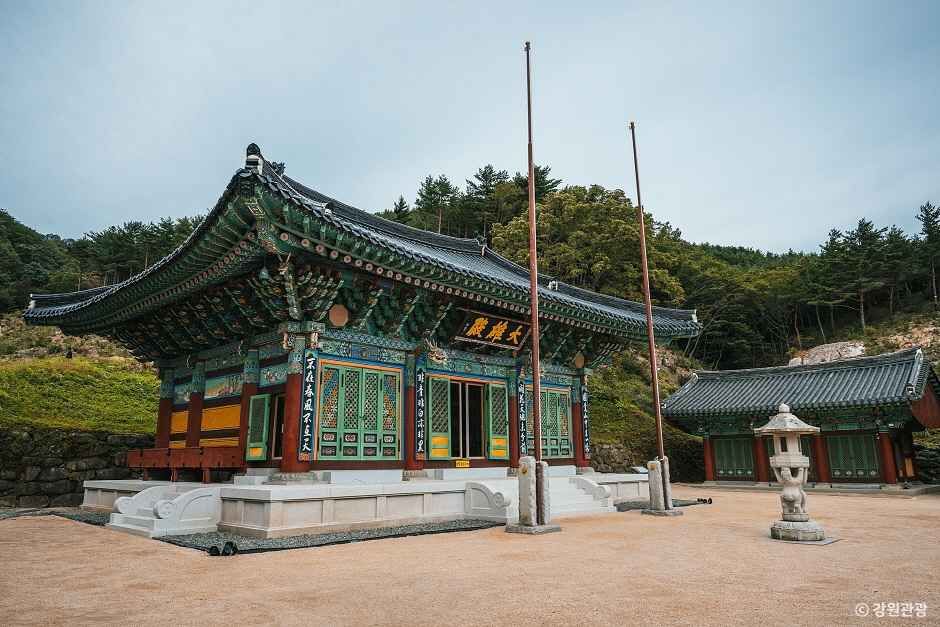
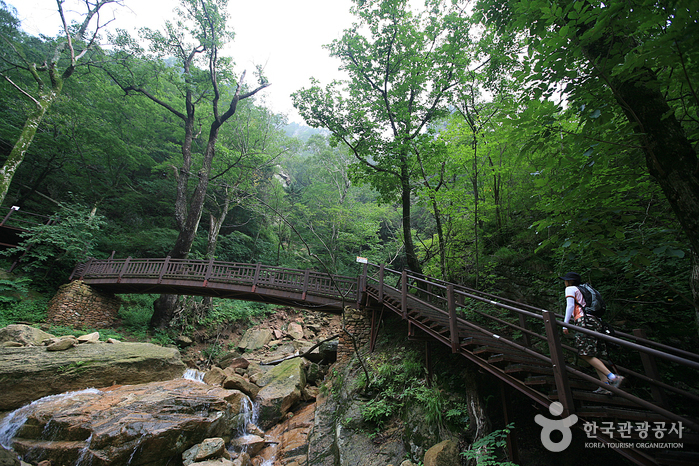
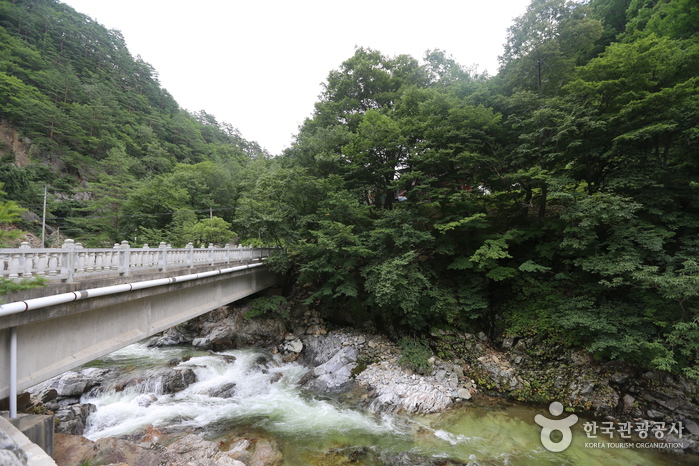
 English
English
 한국어
한국어 日本語
日本語 中文(简体)
中文(简体) Deutsch
Deutsch Français
Français Español
Español Русский
Русский